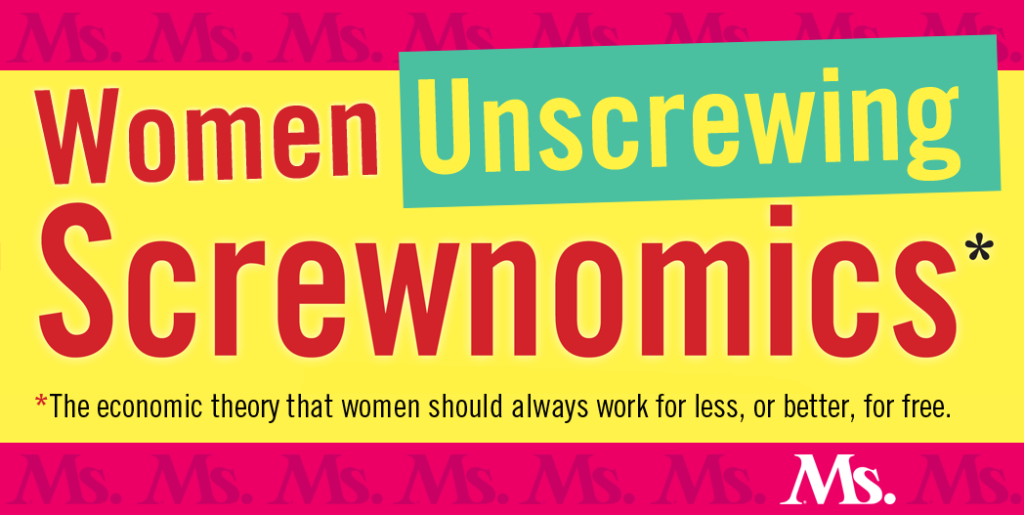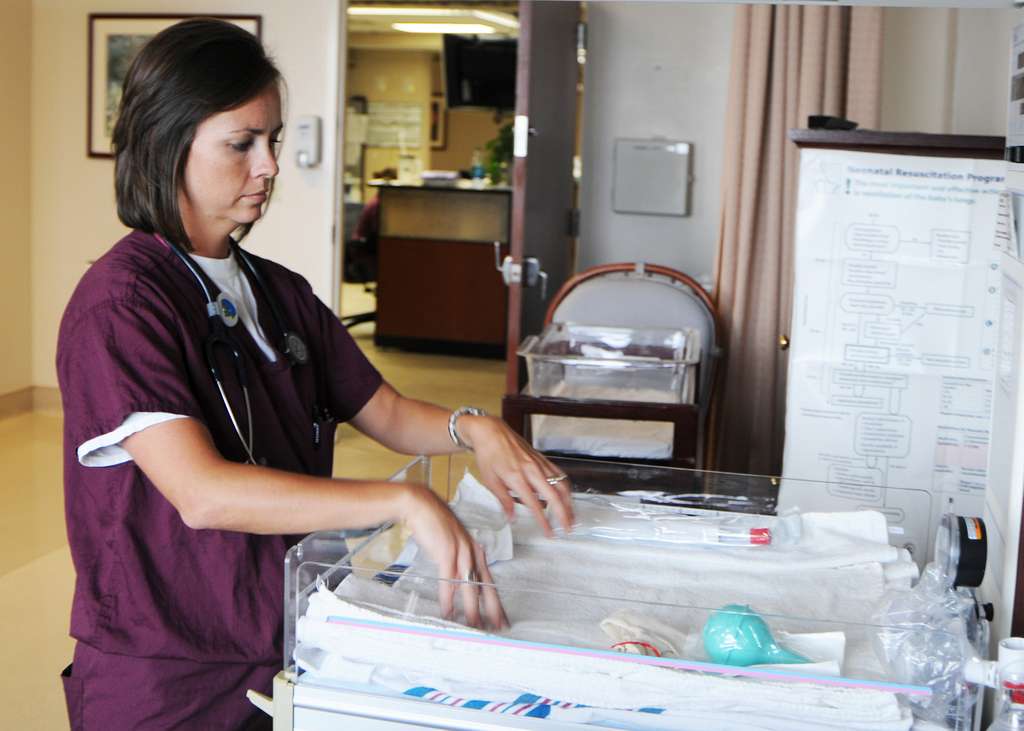The basic problem in many fields today is the discounting of so-called feminine skills we all count on—but generally fail to acknowledge.

It’s time to talk about women’s economics with attitude. It’s time to laugh at what is often absurd and call out what is dangerous. By focusing on voices not typically part of mainstream man-to-man economic discourse, Women Unscrewing Screwnomics will bring you news of hopeful and practical changes and celebrate an economy waged as life—not as war.
When I was growing up in the Midwest in the duo-gender ’60s, my career choices were limited—the reason I skipped college and got married at 19. Becoming a bride was the all-but-inevitable career choice back then, and I got sick at the sight of blood, while being stuck in school sounded horrible. But ever since Florence Nightingale and Helen Keller’s teacher, Anne Sullivan, only those two professions wouldn’t raise eyebrows and resistance.
Nursing—with its emphasis on encouraging health via fresh air, exercise, nutrition and kind care—was very different from doctoring, which took an interventionist approach to the body’s ailments, relying on technology, surgery and drugs. Teaching—with its faith in young children’s malleability and an endearing need for academic and social guidance—was likewise notably different from becoming an administering principal in charge of budgets and punishments.
You already know which of two genders took which path, and which path led to better wages and more authority. In recent years, more women have become doctors and school principals, but by definition, those in charge still must depend on frontline workforces with the emotional intelligence and creative flexibility that people with wombs first pioneered.
Today, both professions are endangered. More than 200,000 education degrees were granted at their peak in the 1970s, but numbered fewer than 90,000 by 2019, according to a 2022 study from the American Association of Colleges for Teacher Education (AACTE). As a result, schools report staffing shortages that the National Education Association (NEA) has called “a five-alarm crisis.” Meanwhile, the American Nurses Association (ANA) has urged the U.S. Department of Health and Human Services (HHS) to declare nurse shortages a national crisis. In 2020, the median age of registered nurses (RNs) was 52, and within five years, a fifth of them planned to retire. Then what?
Young women have many more vocational paths to choose from today, the first reason these professions face diminishing numbers. In the ’70s, 36 percent of all the bachelor’s degrees women earned were in teaching, but now they’re only 6 percent of the total. As example of the change, my eldest daughter, the vice president, manages an international tech corporation. One of my granddaughters won a scholarship in aeronautical engineering. You could no doubt point to similar STEM-related changes within your own family.
Female ambition today has many more choices, thanks in large part to Roe v. Wade and birth control, too. Greater workforce diversity has also proven itself more productive than the all-white-hetero-male businesses of tradition, says the research. Many more doors are opening.
A more immediate reason for dwindling nurses and teachers is COVID-19. Both fields suffered immense new pressures because of it. A recent survey of nurses by Nurses.org found that only 12 percent of nurses were happy with their positions, and 87 percent said they’d felt burnt-out the past year. The reasons they name include COVID and rising numbers of elderly baby boomers, but their biggest concern is “unsafe staffing.” Before the coronavirus, ICU staffing was typically a one-to-one or two-to-one patient-to-nurse ratio, but is now three- or four-to-one.
How do we recalibrate our measures of worthiness to include all that we need, including time to care and pay needed close attention to ourselves, our families and our neighbors?

As one nurse responded: “Having four-plus critically ill patients not only puts licenses at risk, but the patients do not benefit at all. We’re just running around doing tasks, not providing adequate care.”
The pandemic also forced teachers into hyper-vigilance mode, says author and teacher Katy Farber in Education Week, compounding a problem she wrote about in 2010 in her book, Why Great Teachers Quit and How We Might Solve the Exodus. Decision-making fatigue results in burnout. First came the stress of delivering remote learning, followed by returning to school without clear protocols for masks and testing. She asks, “How can I keep my students calm, happy, safe and protected? From guns. From abuse. From hunger. From a virus. This feels impossible, but we try and try each day to help them feel okay in a world that feels far from okay.”
The basic problem in both fields, and possibly in many fields today including politics, is the discounting of so-called feminine skills we all count on, but generally fail to acknowledge by anything more than annual flowers and apples. Both nurses and teachers of any gender are paid as little money as possible, and command too few resources for taking care of their tasks. Because they care, this matters.
The starting pay for teachers in the 2019-20 school year, according to the U.S. Bureau of Labor Statistics was a shocking $41,163, and that’s an increase of 2.6 percent. State education departments struggle to maintain teachers who, in addition to lacking livable wages, also are shortchanged needed crayons and paper and hand sanitizer. Five states—Delaware, Nevada, Hawaii, Utah and Oklahoma— have actually resorted to a private donation platform for these needs. This echoes individual teachers who have also begged for funds.
Nurses’ pay is slightly more, though it differs dramatically depending on location, specific degrees and specialized fields. The median annual pay average for all nurses, says the U.S. Bureau of Labor Statistics is $77,600. During the pandemic, some wondered why they weren’t eligible for “hazard pay,” given all that they and their families risked just to keep them on duty.
Both fields might have been helped by hazard pay and student loan forgiveness. Instead, too little pay, and work overload typifies both occupations. And now safety on the job is another issue. Back in the ’60s, hospitals didn’t need to post signs that said, “No firearms allowed.” During COVID, emergency room visits saw firearm wounds increase by 34 percent. In the first year of the pandemic there were 62,500 firearm-related injuries reported, and many competed for ICU beds.
Of course, as senators debate the subject, we’re all too aware of gun dangers at schools, daily weighing on our children and their teachers. Since Columbine in 1999, nearly 300,000 children have been on site and experienced a school shooting. Guns are now the leading cause of death among children and teens. Yet as Jackson Katz recently noted in Ms., the media continues to ignore the gender of shooters and their victims.
Gun fascination and using guns for conflict resolution is rare among females. Let us recognize that when white male Texans recommend “hardening” our schools and teachers, this is code to “man up” and spring into dick-head denial. It’s as if we’re being held captive in a grade B Western movie at the O.K. Corral.
Caring and close attention begins with one’s mother, if you’re fortunate. But your being motherly in the world of today’s professions is hardly a compliment and never a goal. Being professional means keeping an emotional distance, relying on data like the facts I’ve used in this piece. But unless emotion drives us to discover what is real and true and needed, our problems will be met by pat answers harkening back to a white-picketed Father Knows Best.
Being motherly in the world of today’s professions is hardly a compliment and never a goal.
Our own dads seem more vulnerable, aggrieved and mostly silent. Since Watergate and tobacco testosterone … excuse me, I mean testimony … men’s performative lies have been on full display. Yet gendered supposedly logical, detached thinking remains cherished in algorithms and high-speed market trading. Data-driven artificial intelligence claims an unencumbered knowledge, freed of the complex, contradictory emotions of us humans. That doesn’t mean it can’t exploit these on social media, unraveling old standards for civil discourse and behavior.
Back in the duo-gender ’60s, we girls knew what to expect. Our helpmate role applied to our husband and our bosses, all male, but also to every child, or else what kind of woman were you? In the ’80s, mothers joined the workforce in greater numbers, one income no longer enough to pay the rent. Today all we workers mostly live without a fabled wife at home to provide loving care and close attention—though the drudge work she did remains, and who among us now has clean, matched socks?
The trouble with caring is its imposition on our time. Close and caring attention isn’t efficient; it isn’t straightforward. It is luxury that money alone can never provide. Given we each have only 24 hours in a day, only eight of them paid if we’re lucky, how do we recalibrate our measures of worthiness to include all that we need, including time to care and pay needed close attention to ourselves, our families and our neighbors?
Will providing nurses and teachers the money they are due as professionals make a difference? Of course. But will that alone stop this hemorrhaging of essential emotional services that any civilization requires? Unexamined, money and professionalism alone may only further encrust a cultural silence about the real economic value of passionate attention, of motherly parenting and mentoring, and a universal need for emotional brainpower and love.
We’ll know we’ve broken new ground when Siri and Google sometimes speak in an attentive and caring male voice—and when kind and loving men called ‘soft’ understand it’s no critique of their lower anatomy but high compliment.
Up next:





